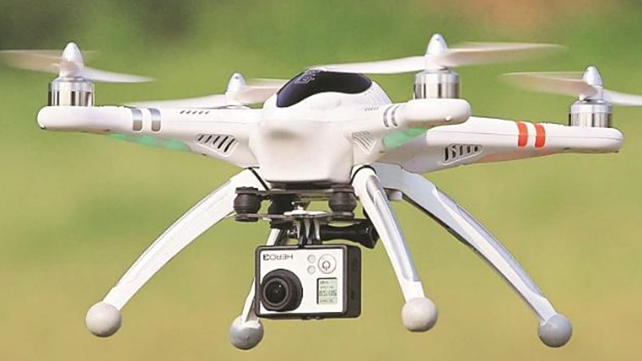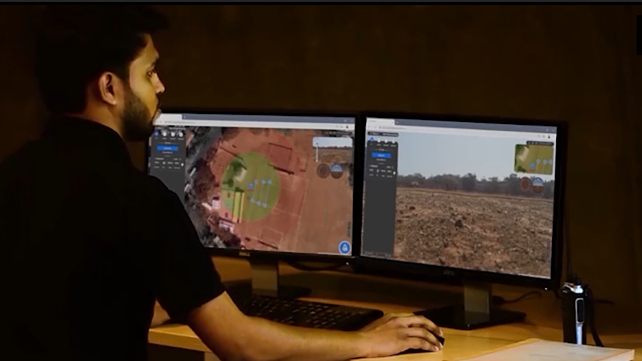
Unmanned Aerial Systems (UAS), more popularly known as ‘drones’, are increasingly commonplace in India. Drones revolutionise how surveys are done at mining and construction sites, infrastructure projects like roads and irrigation channels. Drones are also proving vitally useful for disaster management, where they can provide very detailed real-time data on a particular location rather than relying on maps which can sometimes be outdated. To enhance the use of drones, the Return on Investment (RoI) on various use cases are already favourable, and work is now being done to enhance their use on a large scale.
New beginning
Despite their growing popularity, drone operations remain mired in a maze of regulations and red tape. However, promising developments are taking place. Recent exemptions announced by the Ministry of Civil Aviation (MoCA) & Directorate General of Civil Aviation (DGCA) will drive greater adoption of drones nationwide. In May, MoCA and DGCA announced that 20 consortia (out of 34) had been selected to conduct BVLOS experimental drone flights by the ‘BVLOS Experiment Assessment and Monitoring (BEAM) Committee’. Beyond Visual Line of Sight (BVLOS) drone operations allow their usage even outside the pilot’s visual range. The benefits of BVLOS drone operations are that more flight area can be covered in a given time, feature higher levels of automation and are better suited for accessing hazardous or remote areas. Typically drones configured for BVLOS operations are more sophisticated platforms, which are heavier, have more range and can carry advanced camera and sensor payloads.
The recent conditional exemptions accorded by MoCA and DGCA to the 20 consortia will be valid for one year, but the BVLOS trial flights conducted cannot be used for commercial purposes. The intention behind the trials is to aid in the formulation of the regulatory framework for drone deliveries and rules for Unmanned Aerial Vehicles (UAV) pertaining to BVLOS operations. On formalisation and implementation of these rules by MoCA and DGCA, Indian drone operators can undertake BVLOS operations countrywide.

Trial period
The Government of Telangana has already received approval to start trials for experimental delivery of COVID-19 vaccines using Visual Line of Sight (VLOS) and BVLOS drones. Trials will commence before the end of May, and in April, the Indian Council of Medical Research (ICMR) was granted a conditional exemption to perform a COVID-19 vaccine drone delivery feasibility study in collaboration with IIT Kanpur. BVLOS drone operations are quite complex and work to prepare the required documentation and regulatory processes before widespread commercial adoption occurs now underway. A detailed proof of concept will have to be submitted to MoCA and DGCA by the Government of Telangana on completion of its trials.
Cleared for take-off
The trials in Telengana will require support from several stakeholders, and the selected consortia firms will need to develop BVLOS drone operation Standard Operating Procedures (SOP), including coordinating with Air Traffic Control(ATC) and Indian Air Force (IAF). Security clearance will need to be obtained from the Ministry of Home Affairs (MHA) for entities and personnel involved and the proposed airspaces before the start of trials. A Single Point Coordinator (SPC) from the Government of Telangana will be posted at Shamshabad ATC for the entire duration of the trial flights. Before each BVLOS flight trial, a flight plan will need to filed at Shamshabad ATC. A Flight Information Centre (FIC) number and Air Defence Clearance (ADC) number will also need to be obtained. Basic UAS Traffic Management (UTM) infrastructure will also have to be established by each of the consortiums engaged in the trials with real-time management of the flights. ATC and IAF units will also need to be provided with situational awareness data to ATC and IAF units, and contingencies such as Command and Control (C2) lost-link will also need to be catered to.

Drone call
The Government has mandated that the BVLOS trial flights will need to be conducted using micro or small category rotary-wing drones that must have sufficient endurance for long-range operations and withstand adverse weather. The maximum permitted height for drone operations is 400 feet Above Ground Level (AGL), and the drone must be able to transmit identity and live trajectory information, in addition to carrying a barometric sensor on-board. For the trials, Visual Meteorological Conditions (VMC) should prevail for drone operations at take-off, landing sites, and flying limited between local sunrise and local sunset.
These drones must have capabilities such as Geo-fencing, Return to Home (RTH) and Automatic Flight Termination (AFT), in addition to the ability to conduct autonomous operations. RTH is an automated flight feature that allows a drone to make a safe landing on the pilot’s instruction if there are connectivity issues and the loss of sight of the drone or safety hazards. AFT allows the drone to end its flight in a controlled manner in case of a critical systems failure or the drone pilot loses control. The Government has also mandated that the drone pilot receive the following data, including live trajectory, manned aircraft information, Detect and Avoid (DAA) system information and First Person View (FPV) with visual/ audio alerts. FPV allows the drone pilot to fly the aircraft using a video feed. To enhance the drone’s visibility and prevent collisions, it will need to have bright colours, flashing strobe lights, a 360-degree collision avoidance system to avoid terrain and obstacles and a DAA system to detect and prevent manned and unmanned aircraft.
Image courtesy: PIB